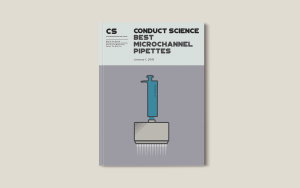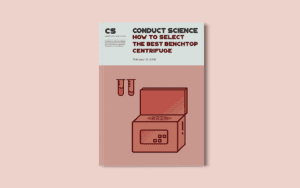
Best Microchannel Pipettes: A Comprehensive Guide
Introduction Pipetting, at first glance, would seem a fairly simple and easy task. Essentially described as glass or plastic tubes used to measure and transfer

Pharmaceutical drug products have the potential to eliminate diseases and increase life expectancy. New drugs must provide evidence of efficacy, effectiveness, and perceived value. At the same time, societies are struggling with the increasing costs and delays associated with drug discovery and marketing. Note that the average research and development cost for a new drug exceeds $2.6 billion. Factors, such as an increase in population aging, population growth, urbanization, obesity, mental illnesses, and prescription drugs bill, should also be considered by researchers, stakeholders, and authorities (Wise et al., 2018).
Consequently, more and more pharmaceutical companies and regulatory bodies have started to implement real-world data in drug discovery and development. Real-world data is defined as medical information collected in non-experimental conditions and across heterogeneous populations. Sources of real-world data vary from electronic health records to administrative claims. Appropriate tools to incorporate, analyze, and validate real-world data across various sectors (e.g., biostatistics) also become integrated into practice. Research findings reveal that real-world data has numerous benefits. Early access to medication schemes, for instance, is an essential factor which can advance drug discovery and public health. As a result, regulatory bodies worldwide are becoming more flexible and transparent. Note that to avoid conflicting guidance, a consensus between local and international agencies must be reached. Health technology assessment agencies, in particular, support the successful implementation of technology and real-world evidence. Since real-world data in drug discovery can accelerate the entire cycle of drug development, biopharmaceutical companies need to embrace real-world evidence and patient-centric models in digital health in order to provide a balance between costs, drug effectiveness, and perceived value.
Real-world data can benefit numerous aspects of research, including drug discovery. Drug discovery can be defined as the process of identifying new compounds and medications. Once a novel compound has been identified, the process of drug development can continue to establish a new medication on the market. Note that the newest advancements in scientific research and health technology have shifted the focus of research. Scientists focus on how a certain disease can be controlled on a molecular level and employ real-world data to support continuing research. Getting a better understanding of any disease is essential. Therefore, it’s alarming that, according to recent findings, seven out of eight compounds used in the clinical testing pipeline might be unsuccessful. Although pharmaceutical companies tend to employ real-world data mainly in post-marketing research, real-world evidence becomes eminent. Real-world data can benefit the entire cycle of drug discovery and development, with the following areas of implementation (Wise et al., 2018):
Clinical research is complex. Randomized clinical trials are still defined as the gold standard in research. Although controlled medical studies provide valuable insights into drug efficacy, data obtained from real-world settings and diverse populations becomes mandatory to assess drug effectiveness. When it comes to drug discovery, real-world data can complement scientific findings and help researchers generate hypotheses and recruit participants. Since pharmaceutical bodies need to accommodate real-world data, pragmatic trials (that assess drug effectiveness in routine clinical practice) become a valuable approach. Pragmatic trials can decrease costs and improve generalizability because the focus of research is no longer on highly selective samples or strict inclusion/exclusion criteria. Note that a recent study, which tested a new inhaled therapy for chronic obstructive pulmonary disease, assessed drug effectiveness in real settings, revealing that real-world data can decrease costs and improve health outcomes. In fact, real-world data can benefit both the pre- and post-approval process for new drugs. In the post-approval aspect, for instance, real-world evidence can help experts reach a balance between drug safety, governmental regulations, and patient outcomes.
Real-world data in drug discovery can benefit pharmacoepidemiology (Toh, 2017). Note that pharmacoepidemiology is an ambitious discipline that connects pharmacology and epidemiology. One of the main goals in pharmacoepidemiology is to assess the benefits of a new drug in large populations. It’s interesting to mention that pharmacovigilance is defined as a subdiscipline of pharmacoepidemiology. Recent findings show that more and more regulatory bodies and research initiatives, such as the European Union-Adverse Drug Reaction project, integrate real-world data and mining of clinical databases in scientific knowledge. Such data can help experts explore drug safety and drug discovery. What’s more, with the increasing use of electronic health records and digital health tools in practice, smart real-world data becomes essential in medical research.
Real-world data can improve the entire nature of disease taxonomy or disease classification. With novel medical practices focusing on the molecular level of diseases, the current Classification of Diseases (ICD) has started incorporating molecular findings to improve disease classification and drug discovery. This approach will help researchers plan a clinical trial based on relevant characteristics and allow participants to access effective treatments. Since real-world data covers a wide variety of sources (e.g., medical history, patient outcomes), stakeholders, researchers, and patients are willing to share and employ real-world data in order to benefit disease taxonomy and patient care.
Real-world data in drug discovery has a wide range of benefits, particularly in the field of quantitative systems pharmacology (Geerts & Spiros, 2015). Note that quantitative systems pharmacology aims to explore the effects of a novel drug by incorporating mathematical models, pharmacological information, and biological systems. In fact, this research discipline reveals numerous insights into drug design, biomarkers, and dosage. One of the challenges that quantitative systems pharmacology faces, though, is associated with data collection. Experts need to understand how to validate and incorporate real-world quantitative data. Since wearable devices and mHealth apps are among the most popular tools in health research and practice, data that comes directly from patients and their electronic devices can be abundant and unstructured. Security concerns and data privacy should be considered as well. Interestingly, recent studies show that when it comes to drug discovery, patients are willing to share their data and contribute to science.
Digital health is becoming more and more personalized, an approach known as precision medicine. In fact, real-world and genomic data can revolutionize precision medicine (Agarwala et al., 2018). Researchers have started to take into account individual preferences, genetic differences, and histories to analyze drug effectiveness. Modeling and simulation techniques can also benefit precision medicine and help researchers identify patients who would respond to therapy before the actual clinical trial. To set an example, a novel study used genetic sequencing to identify suitable participants with gastrointestinal cancer. With the newest advancements in health technology, tech solutions foster precision medicine and drug discovery. For instance, the mining of electronic health records can be supported by the use of controlled vocabulary and natural language processing. Wearables, on the other hand, can capture a wide range of subjective and objective data off-site. Hence, artificial intelligence can help researchers extract, validate, and exchange data across diverse datasets. To support interoperability and drug discovery, standards for data exchange and safety should be implemented in practice.
Social media plays a crucial role in people’s lives, including well-being. Social media channels (e.g., Facebook, Twitter) are a powerful source of real-world data. To be more precise, the mining of social media sources has numerous benefits (Limaye & Saraogi, 2018). Such information can provide insights into pharmacovigilance, post-marketing practices, and people’s lives. For instance, data collected via social listening can give insights into important medical questions (e.g., why patients switch between therapies), which can foster drug discovery and development. Yet, researchers need to tackle factors, such as data validation, unstructured data, grammar mistakes, and privacy concerns, which become obstacles in social listening. Note that specialized health channels and online platforms are highly valuable as they provide structured and tailored medical information.
Real-world data can benefit all areas of the entire drug lifecycle, particularly drug discovery. Interestingly, FDA has already started to employ real-world data regarding approval decisions about new health treatment devices. Nevertheless, as real-world sources are often unstructured and unregulated, artificial intelligence and other digital solutions should be employed. Digital tools can help researchers access structured information across a wide range of sources. Experts agree that regulatory guidance is also needed to provide effective ways of standardizing real-world evidence. Legal issues of data ownership and technical concerns about data security need to be considered, with cybersecurity being one of the leading factors to address in research. Interestingly, it’s been proven that blockchain technology can facilitate data exchange and integrity. In fact, interoperability is another challenge that researchers need to tackle. Since real-world data sources fluctuate, with information being difficult to access or exchange, there’s a need for a global catalog or marketplace (Wise et al., 2018). Consequently, researchers have started to develop a global catalog for data, as well as a common data model for noisy and unstructured data.
The most important aspect of drug discovery is to embrace the influence digital health technology has on medical research. A common platform, for instance, can eliminate the need for data wrangling or the need for organizing of a wide range of existing real-world data sources. In addition, any cloud-based platform for biomedical data can be regulated by clear business models on how to purchase data once and reuse it across disciplines. Note that incompatibility between platforms can be addressed by the integration of standards, such as Health Level Seven (HL7) and Fast Healthcare Interoperability Resources (FHIR), as well as clear roles and methodologies. These aspects of research, of course, require specific research skills for the exploitation of real-world data and Mendelian randomization. Most of all, researchers need to embrace the fact that participants have become the center of medical research and drug discovery. Real-word data should recruit people whose needs haven’t been met by current treatments, speed recruitment, and development, and optimize relevant results at an affordable cost.
From drug discovery to marketing authorization, real-world data has numerous applications in drug discovery. Biopharmaceutical companies admit that real-world data is becoming an integrated part of the development lifecycle of their products. It can benefit disease taxonomies, drug effectiveness, and post-marketing practices. Real-world data can also establish endpoints and outcomes that are patient-centered, which is a leading focus of digital health research. In fact, patients can authorize data sharing from apps and wearables. Note that studies show that patients are eager to share their medical information. The implementation of technology allows the collection of high-quality data and licensing (Wise et al., 2018). At the same time, as explained above, real-data implementation comes with numerous practical challenges. Stakeholders should reveal a medicine’s real-world value. Pharmaceutical companies should increase patient well-being, decrease costs, and focus on long-term benefits. Regulatory bodies, health technology assessment agencies, and biopharmaceutical companies should develop a common language and standard practices. Simply because investing in real-world data will lead to better health outcomes.
In the end, real-world data can complement scientific findings, foster drug discovery, and save people’s lives.
Agarwala, V., Khozin, S., Singal, G., O’Connell, C., Kuk, D., Li, G., Gossai, A., Miller, V., & Abernethy, A. (2018). Real-World Evidence in Support of Precision Medicine: Clinico-Genomic Cancer Data as A Case Study. Health Affairs, 37 (5).
Geerts, H., & Spiros, A. (2015). From Big Data to Smart Data. How Quantitative Systems Pharmacology Can Support CNS Pharmaceutical R&D. Journal of Pharmacokinetics and Pharmacodynamics.
Limaye, N., & Saraogi, A. (2018). How Social Media Is Transforming Pharma and Healthcare. Applied Clinical Trials, 27 (2).
Toh, S. (2017). Pharmacoepidemiology in the Era of Real-World Evidence. Current Epidemiology Reports, 4 (4), p. 262-265.
Wise, J., Moller, A., Christie, D., Kalra, D., Brodsky, E., Georgieva, E., Jones, G., Smith, I., Greiffenberg, L., McCarthy, M., Arend, M., Lutteringer, O., Kloss, S., &Arlington, S. (2018). The positive impacts of Real-World Data on the challenges facing the evolution of biopharma. Drug Discovery Today, 23 (4), p. 788-801.

Introduction Pipetting, at first glance, would seem a fairly simple and easy task. Essentially described as glass or plastic tubes used to measure and transfer

Resource Identification Initiative: A Key to Scientific Success and Analytics The key to success can be found in the essential principles of the Resource Identification

INTRODUCTION AND BRIEF HISTORY One of the most important pieces of equipment in the laboratory is the centrifuge, which facilitates the separation of samples of

INTRODUCTION AND BRIEF HISTORY One of the most important pieces of equipment in the laboratory is the centrifuge, which facilitates the separation of samples of






DISCLAIMER: ConductScience and affiliate products are NOT designed for human consumption, testing, or clinical utilization. They are designed for pre-clinical utilization only. Customers purchasing apparatus for the purposes of scientific research or veterinary care affirm adherence to applicable regulatory bodies for the country in which their research or care is conducted.